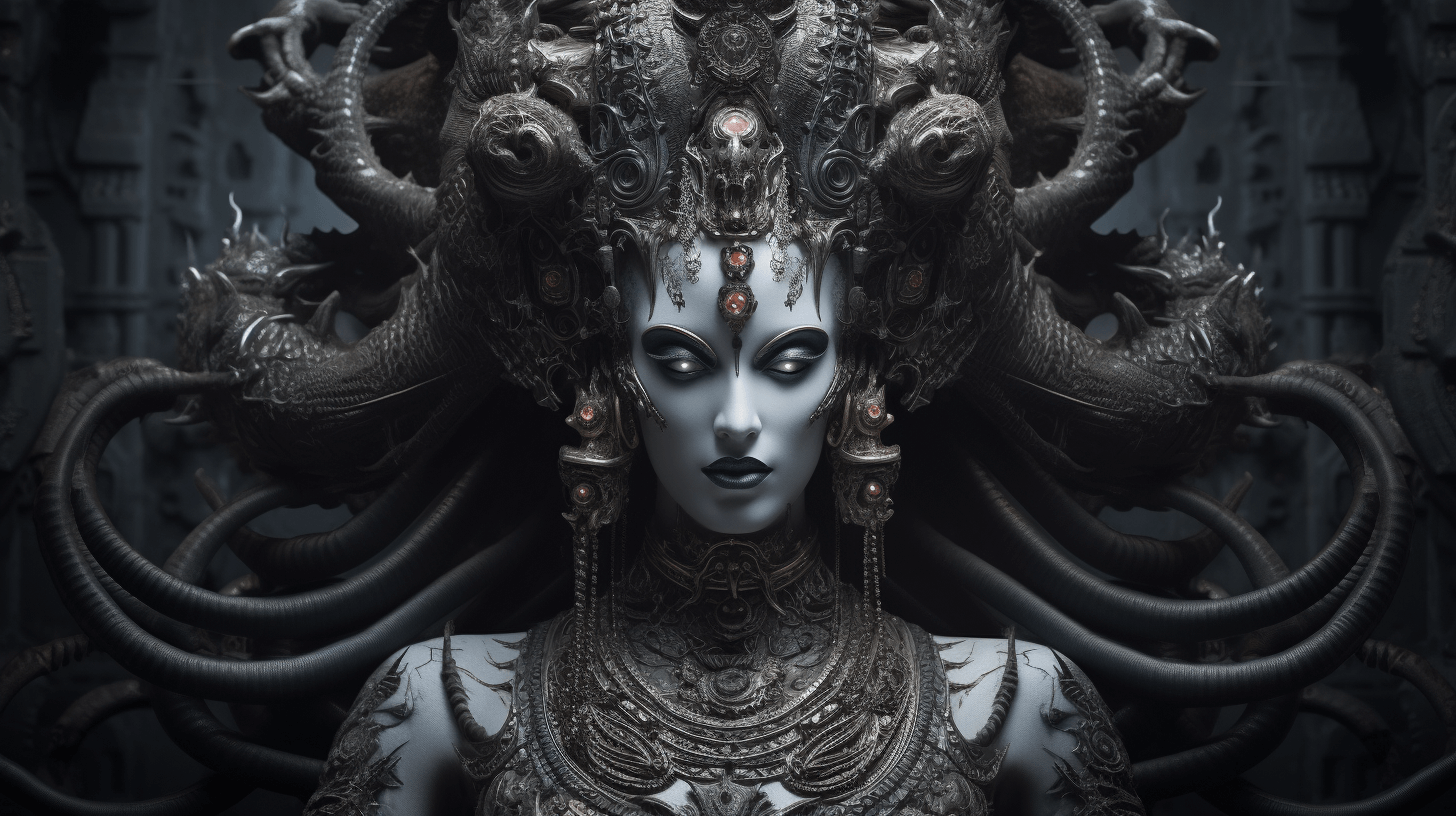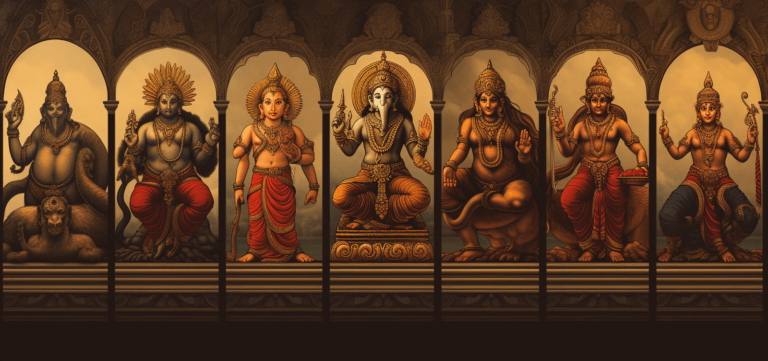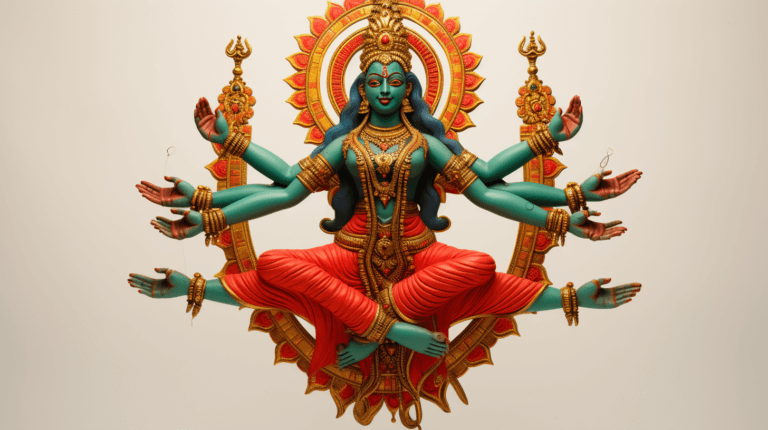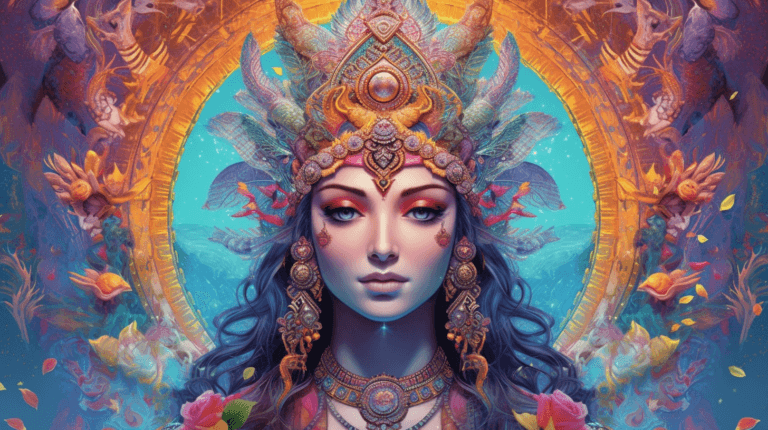Goddess Kali: The Fierce and Compassionate Deity
Introduction:
Goddess Kali, often referred to as the Divine Mother, is one of the most revered and powerful deities in Hinduism. With her striking appearance and multifaceted symbolism, she embodies both ferocity and compassion. Kali is a complex goddess whose worship dates back centuries and continues to hold great significance in Hindu culture. In this article, we will delve into the fascinating aspects of Goddess Kali, exploring her origins, symbolism, mythology, and significance in contemporary society.
Origins and Iconography:
The origins of Goddess Kali can be traced back to ancient Hindu texts, primarily the Devi Mahatmya, a section of the Markandeya Purana. She emerged from the brow of the goddess Durga during a battle against the demon Raktabija. Kali’s appearance is awe-inspiring and distinct. She is depicted as a dark-skinned goddess with a fierce countenance. She has a disheveled mane of hair that flows freely, symbolizing her wild and untamed nature. Kali is often portrayed wearing a garland made of human skulls and a skirt of dismembered arms. In her four hands, she carries a sword, a severed head, a bowl for collecting blood, and a gesture of fearlessness.

Symbolism and Attributes:
The symbolism associated with Goddess Kali is rich and profound. Her black complexion signifies her all-encompassing nature, absorbing both good and evil. Kali’s wild and disheveled hair represents her unbound freedom from societal norms. The garland of skulls symbolizes her victory over death, reminding worshippers of the impermanence of life. The skirt of dismembered arms represents her role as the liberator, freeing individuals from attachment and ego. The sword she carries represents knowledge, while the severed head represents the ego. The blood-filled bowl signifies both destruction and nourishment, reminding devotees of the cyclical nature of existence.
Mythology and Legends:
One prominent legend associated with Kali is the destruction of the demon Raktabija. Raktabija had a unique ability that allowed him to replicate himself from every drop of his blood that fell on the ground. In the battle against Raktabija, Kali drank the demon’s blood before it could reach the ground, preventing his reproduction and ultimately defeating him.
Another well-known story involves Kali’s dance of destruction, known as the Tandava. It is said that during a fit of rage, Kali began a frenzied dance, shaking the entire universe. Fearing her unstoppable rampage, Lord Shiva, the Hindu god of destruction, lay down at her feet. This act of submission calmed Kali, and she ceased her dance, symbolizing the balance between creation and destruction.

Significance and Worship:
Goddess Kali holds immense significance in Hindu culture and spirituality. She is often revered as the divine mother, representing the fierce protective energy that defends and nurtures her devotees. Kali is associated with transformative powers and the destruction of ignorance, ego, and negative forces. Her worship is prevalent, particularly among tantric traditions, where she is seen as the ultimate embodiment of Shakti, the feminine divine energy.
Kali Puja, celebrated during the new moon in the Hindu month of Kartik (October/November), is a significant festival dedicated to Goddess Kali. Devotees offer prayers, perform rituals, and engage in devotional practices to seek her blessings. During this festival, Kali temples and homes are adorned with flowers, lamps, and images of the goddess, creating a vibrant and spiritually charged atmosphere.

Contemporary Significance:
Beyond the realms of traditional religious practices, Goddess Kali’s influence extends to contemporary culture. Herimage has been embraced by various movements and artistic expressions, representing rebellion, empowerment, and the breaking of societal norms. In modern interpretations, Kali is often seen as a symbol of female empowerment and the destruction of oppressive forces.
Moreover, Kali’s symbolism has also found its way into popular culture, including literature, music, and visual arts. Her fierce and untamed nature has inspired artists and writers to explore themes of liberation, inner strength, and the power of transformation. Kali’s image has become an icon of strength and fearlessness, resonating with individuals seeking empowerment and liberation.

Conclusion:
Goddess Kali, with her awe-inspiring appearance and multifaceted symbolism, embodies the contrasting aspects of ferocity and compassion. Her origins, iconography, and mythology are deeply rooted in Hindu traditions, and her worship continues to be an integral part of Hindu culture. Beyond religious practices, Kali holds contemporary significance as a symbol of empowerment, rebellion, and liberation. Her image has transcended traditional boundaries and inspired individuals to embrace their inner strength and challenge societal norms. Goddess Kali remains an enigmatic and powerful deity, reminding us of the transformative power within ourselves and the importance of balancing destruction and creation in our lives.




